If you’ve noticed that your concrete driveway, patio, or sidewalk slopes toward your house instead of away from it, don’t worry – you’re not alone. This is a very common problem and relatively easy to fix. Unfortunately, people often make the mistake of thinking that they need to replace their entire concrete slabs, but this isn’t the case. In most cases, you must do some simple things to fix this issue.
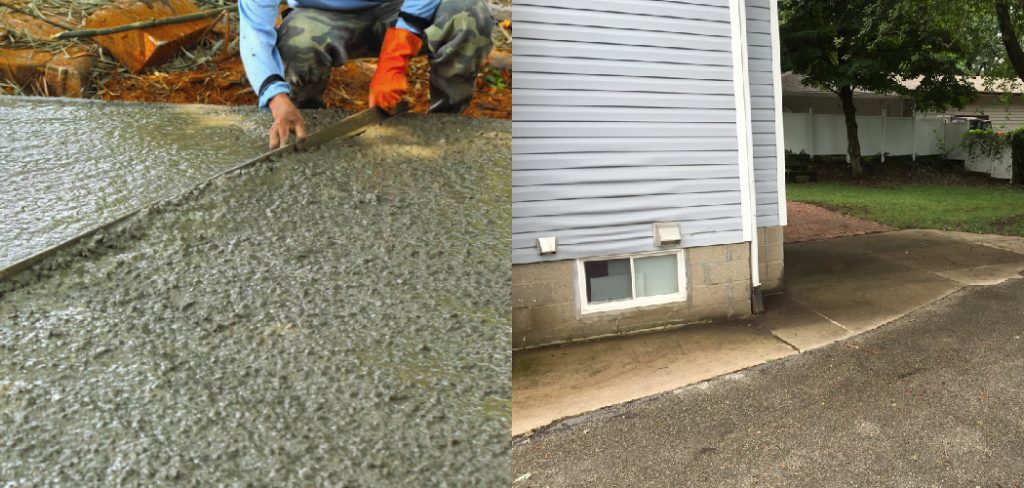
This is a common problem, but it’s also one that can be easily fixed. This post will show you how to fix concrete sloping toward house and keep your home safe and protected. Keep reading for more information!
Summary: Concrete sloping toward a house can lead to water infiltration and other structural problems. To fix this issue, it is important to understand the underlying cause of the problem. It could be due to poor drainage design, improper installation of the concrete slab, or shifting soils.
In any case, addressing the underlying cause of the problem should be done first. After that, installing a drainage system and restoring the contour of the concrete slab should be done in order to ensure that the water flows away from the house and does not pool near it.
The Main Reason for Concrete Sloping Toward House
There can be many reasons for concrete sloping toward your house. The most common reason is improper grading around your foundation. When the ground around your foundation is not graded properly, water can pool next to your foundation and cause the soil to erode. This can lead to the concrete sloping toward your house.
If you have concrete sloping toward your house, it is important to fix the problem as soon as possible. If the problem is not fixed, water can enter your foundation and cause serious damage to your home.
9 Simple Steps on How to Fix Concrete Sloping Toward House
Step 1: Assess the Problem
First, you need to determine why your concrete is sloping. There are a few possible reasons: poorly graded gravel base, weak concrete mix, inability to properly compact sub base, and excess water in the mix—incorrect curing process.
Once you know the cause of the problem, you can begin to fix it. Otherwise, you run the risk of the problem reoccurring.
Step 2: Add a Gravel Base
You will need to add more gravel if your concrete slows due to a poorly graded gravel base. Begin by excavating the area around your concrete slab. Next, level out the ground and add a layer of gravel. When doing that, you should use a plate compactor to compact the gravel.
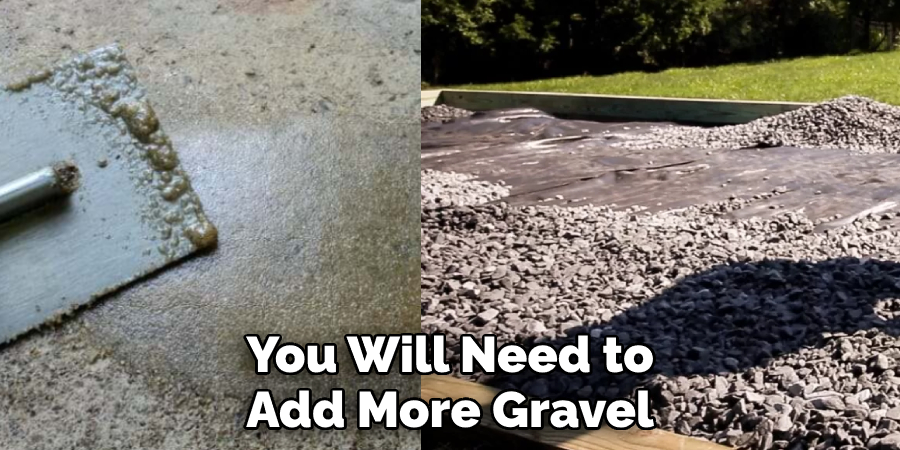
Step 3: Improve the Concrete Mix
If your concrete is sloping because of a weak concrete mix, you will need to improve the quality of your concrete mix. This can be done by adding more cement to the mix. The amount of cement you add will depend on the slab’s size.
You will also need to make sure that you mix the concrete properly. If you do not combine it correctly, it will not be as strong as it should be.
Step 4: Compact the Subbase
If your concrete is sloping because of an unable to suitably compete for act subbase, you will need to use a plate compactor to compact the sub base. This will make the sub-base stronger and less likely to shift in the future. Ensure to compact the subbase in small sections to avoid damaging it. This is very important!
Step 5: Remove Excess Water from the Mix
If your concrete is sloping because of excess water in the mix, you will need to remove that water. The best way to do this is by using a power washer. First, however, you need to be careful not to damage the concrete.
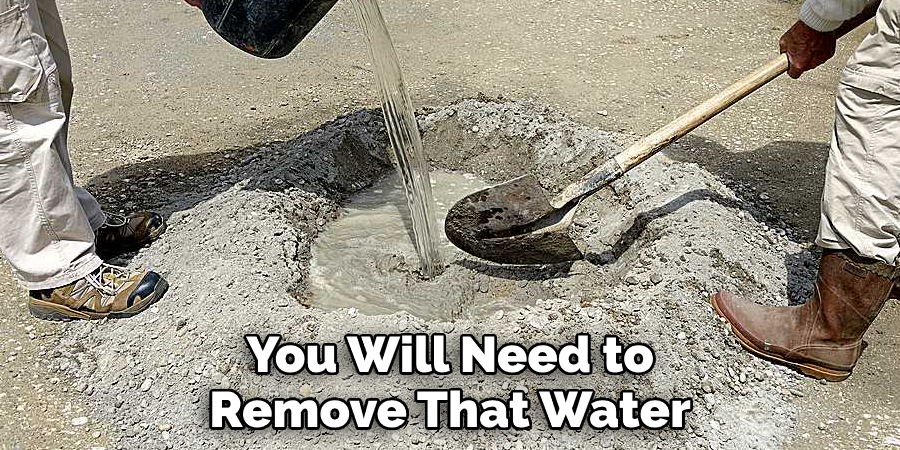
After you have removed the excess water, you should let the concrete dry for at least 24 hours.
Step 6: Check the Curing Process
If your concrete slows because of an incorrect curing process, you will need to redo the curing process. The first thing you need to do is cover the concrete with a curing blanket.
You should leave the curing blanket on for at least three days. After that, you can remove it and spray the concrete with a water-curing solution. Let the solution dry for at least 12 hours before doing anything else.
Step 7: Add a Layer of Soil
You will need to add more soil if your concrete slows because of a poorly graded gravel base. Begin by excavating the area around your concrete slab. Next, level out the ground and add a layer of soil. When doing that, you should use a plate compactor to compact the soil. This important step makes the ground more stable and less likely to shift.
Step 8: Install a French Drain
If your concrete slows because of excess water in the mix, you may need to install a French drain. This will help to remove the water from the combination and prevent it from pooling around the slab.
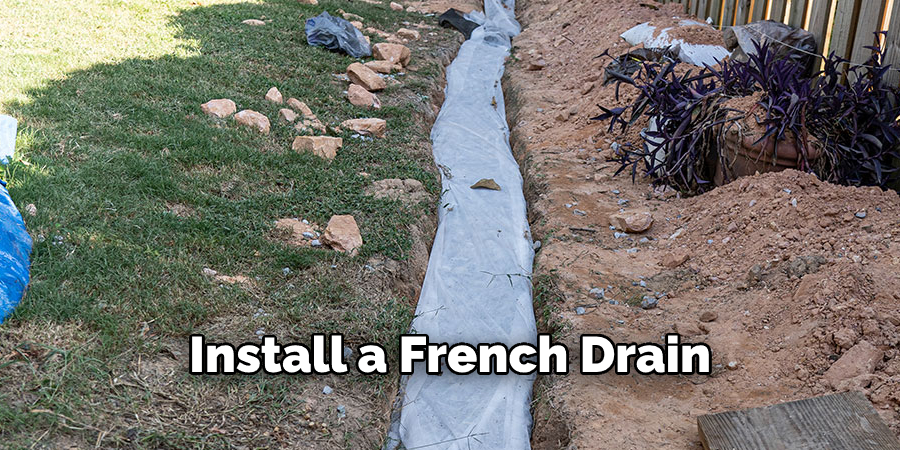
Begin by excavating a trench around the perimeter of the slab. Next, line the trench with gravel and install a perforated pipe. Finally, cover the trench with soil and compact it.
Step 9: Add a Sand Layer
If your concrete slows because of a weak concrete mix, you may need to add a sand layer. This will help to improve the quality of your concrete mix. Begin by excavating the area around your concrete slab. Next, level out the ground and add a layer of sand. When doing that, you should use a plate compactor to compact the sand.
If your concrete is sloping because of a foundation problem, you will need to have the foundation repaired. Again, this is a job that should be done by a professional.
4 Common Methods to Fix Concrete Sloping Toward House
Method 1: Use Soil to Build Up the Low Side
If your concrete is sloping toward your house, you can use soil to build up the low side. This will help to level out the concrete and prevent water from pooling on your property. You will need to dig a trench around the perimeter of the concrete slab. The trench should be about 6 inches deep and 2 inches wide. Fill the trench with soil and pack it down firmly.
Method 2: Use a Concrete Leveler
If you have a concrete leveler, you can use it to fix your sloping concrete. Simply pour the leveler into the low side of the slab and spread it out evenly. The leveler will fill in any low spots and level out the concrete.
Method 3: Use a Concrete Patch
If you do not have a concrete leveler, you can use a concrete patch to fix your sloping concrete. Simply apply the patch to the low side of the slab and spread it out evenly. The patch will help to fill in any low spots and level out the surface. Be sure to let the patch dry completely before walking on it or applying any sealant.
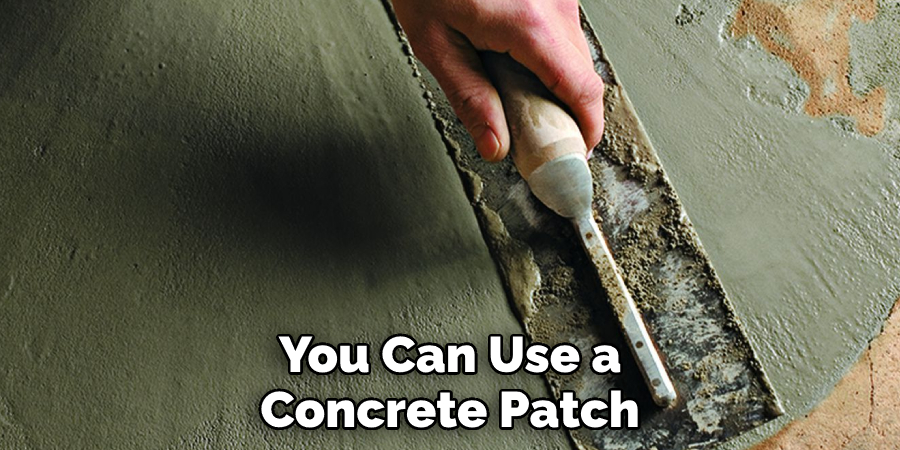
Method 4: Use a Sand Mix
If you have a sand mix, you can use it to fix your sloping concrete. Simply pour the sand mix into the low side of the slab and spread it out evenly. The sand mix will fill in any low spots and level out the concrete. This is very similar to using a self-leveling concrete mix, but it is not as expensive.
Safety Precautions You Need to Know Before Fixing Concrete Sloping Toward House
Homeowners often find themselves in a pickle when they realize their concrete slows towards their house. Not only is this unsightly, but it can also be dangerous if not fixed correctly. Here are some safety precautions you need to know before fixing concrete sloping toward your house:
1. Always use gloves when working with concrete. This will protect your hands from the harsh chemicals in the concrete mix.
2. Wear eye protection when working with concrete. The tiny particles in the air can irritate your eyes and cause severe damage.
3. Use a mask to avoid breathing in the dust created by working with concrete.
4. Ensure the area you are working in is well ventilated to avoid inhaling the fumes created by the curing concrete.
5. Use a ladder or scaffolding to reach high areas when fixing concrete sloping toward your house.
6. Never try to fix concrete sloping toward your house by yourself. Always have someone else present in case you need help.
Be sure to follow the instructions on the concrete mix you are using. This will ensure that your repair job is done correctly and safely.
Following these simple safety precautions can prevent accidents or injuries while fixing concrete sloping toward your house.
Can You Fix Unlevel Concrete?
Assuming the unleveled is not too severe, you can fix it using a simple technique called mud jacking. Mudjacking involves pumping a slurry of concrete and soil underneath the settled slab to raise it back to its original position. The mixture fills any voids that have formed and stabilize the ground so the slab will not settle again.
You may need to have the slab replaced for significant or severe problems. This is a more extensive and expensive repair, but it will correct the problem permanently.
If your concrete is sloping toward your house, it’s important to take action to fix the problem. Concrete that slopes toward your home can cause water to pool against your foundation, leading to severe issues like cracking, settling, and flooding.
Conclusion
Fixing concrete sloping toward your house is relatively easy, but following the steps carefully and taking all the necessary safety precautions is important. By doing so, you can avoid accidents or injuries and have your concrete look new in no time.
If your concrete slows, it is important to fix the problem as soon as possible. Otherwise, you run the risk of the concrete cracking or breaking. If you follow the steps outlined in this article on how to fix concrete sloping toward house, you should be able to fix the problem without any issues. Always take all necessary safety precautions to avoid accidents or injuries.
